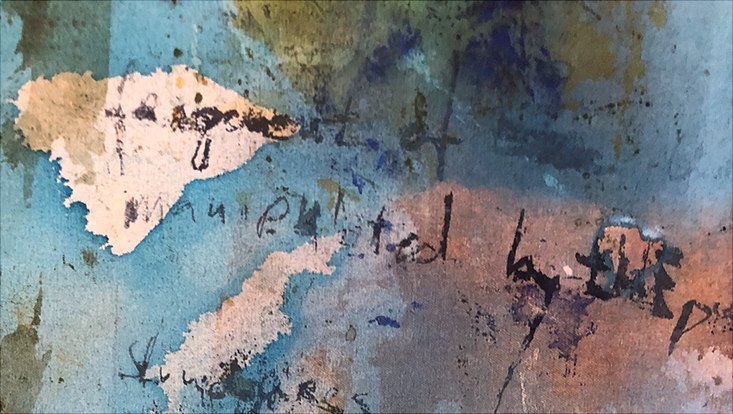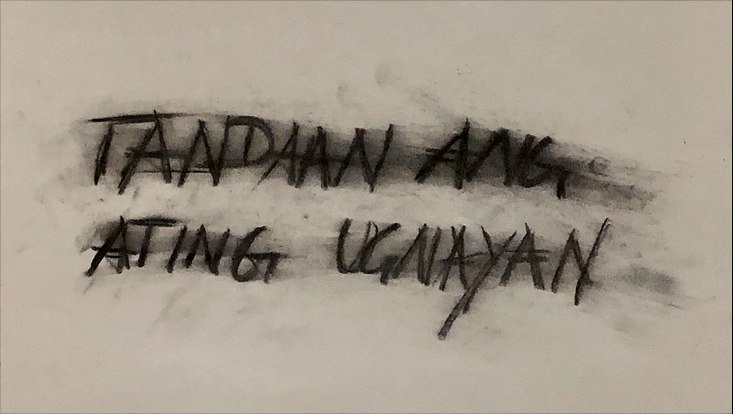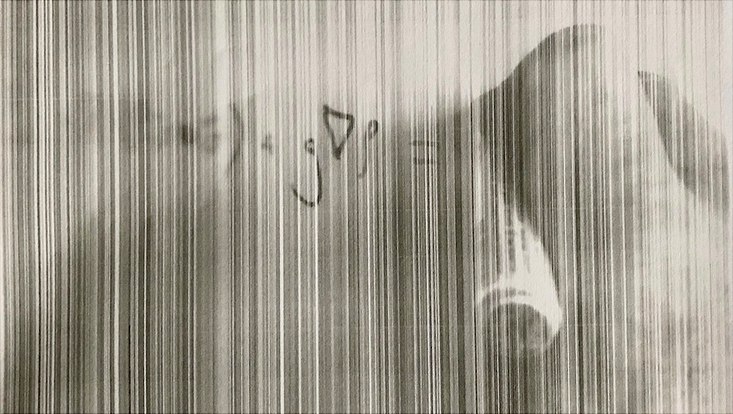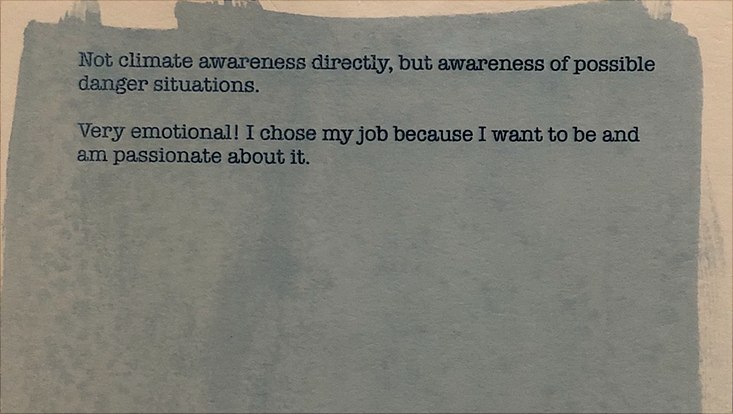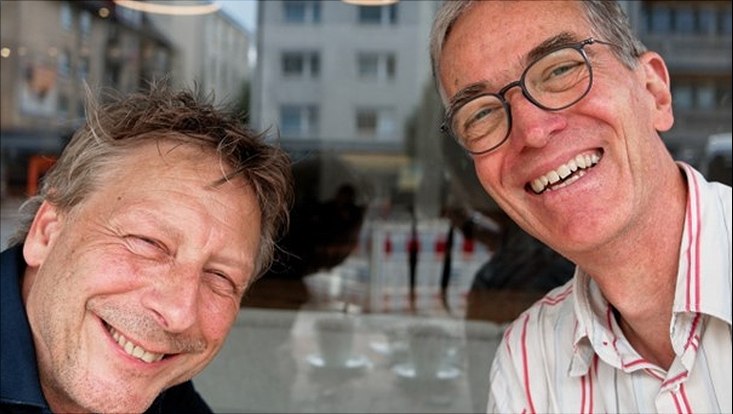Way of No Return
In "Portraits of Climate", Dit Coesebrink, artist (painting and photography), Jörn Behrens, Professor of Applied Mathematics, and Cleovi Mosuela, social scientist, explore the overlaps and intersections between art and science. What initially seemed challenging and barely manageable quickly changed as the participants got to know each other, asked questions, talked and explained. Suddenly it was clear: something is possible. Beyond a collaboration between scientist and artist, lays the possibility of having a real joint effect as humans.
"More interesting for me is the coming together, the collective action through art." – Dr. Cleovi Mosuela
In their exchange, the artist and the two scientists realized that art and science share fundamental principles: both are exploratory, experimental and make use of the creative interplay between imagination and reality. “It's very, very similar. Art and science are pushing the limits – art expands the space of expression and science expands the space of knowledge,” confirms Jörn. He develops creative processes with his students. They try to come up with creative solutions, which are then developed further in the mathematical process.
For Cleovi, art is a way to explore and understand the emotional dimensions of climate change adaptation and climate research. In her research on frontline communities, Cleovi looks at how people find innovative ways to foster a more resilient planet, the community, and themselves. Some community members host participatory art workshops where people impacted by climate variabilities can gather, helping them feel connected to one another and to the planet. Frontline communities don’t think of themselves as victims but as change-makers, paving the way for a healthier relationship with Earth.
Dit engages in experimental processes in his art, tries out and tests many things, to then critically assessing the effectiveness of his visual representations - does it work and why? “Portraits of Climate” provided him with valuable insights into the scientists' work, drawing inspiration from conversations, interviews, and data. His artwork includes cyanotypes and a large-format picturesque screen printing.
"Failure in art is something positive and normal. It is part of the creative process. An incredible amount of constructive things can be made out of failure." – Dit Coesebrink
In Dit's work, fragments of conversations about the scientific work are taken up as prints, screen prints, and cyanotypes. They stand for a permanent repetition of what has been researched and said. Despite repetition, sufficient action in society and governments is not generated.
Scientists present their conclusions clearly and unambiguously. Painting can also convey a strong stance. By using clear outlines or repetitive lines artists can create a "new reality" through repetition. Color traces and areas in the painting evoke concepts of space, limited space, limited time, a game with time, hinting at hidden threats beneath the beautiful appearance of color. The expressive power of painting often lies in its symbolism.
Beauty in art probably always entails also ambiguity or doubtfulness. In mathematics, on the other hand, beauty is often equated with clarity and simplicity of reasoning. In this the two differ.
"An experience that enriches me emotionally and intelectually." – Prof. Dr. Jörn Behrens
VG Bild-Kunst, Bonn

